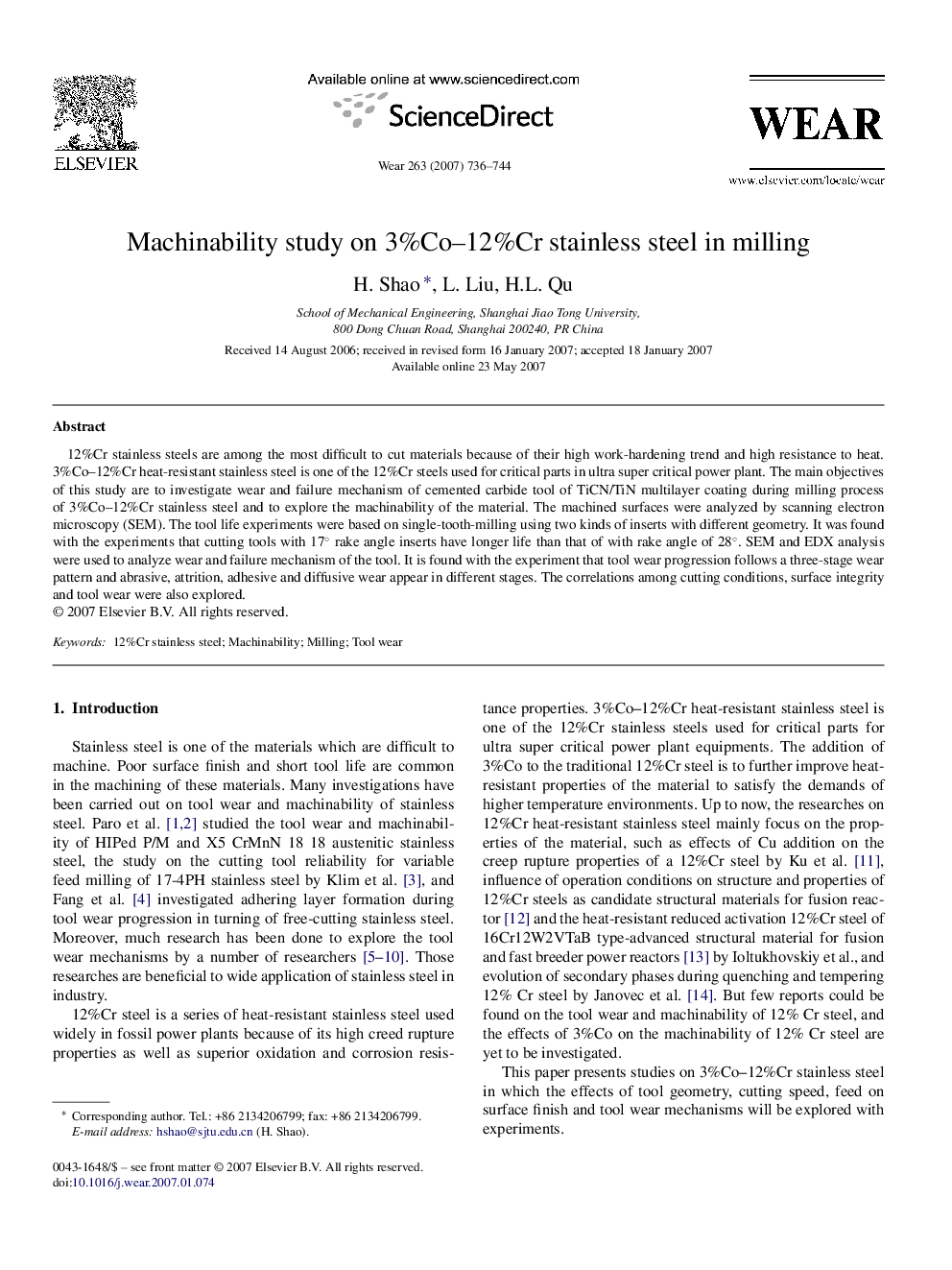| Article ID | Journal | Published Year | Pages | File Type |
|---|---|---|---|---|
| 619885 | Wear | 2007 | 9 Pages |
12%Cr stainless steels are among the most difficult to cut materials because of their high work-hardening trend and high resistance to heat. 3%Co–12%Cr heat-resistant stainless steel is one of the 12%Cr steels used for critical parts in ultra super critical power plant. The main objectives of this study are to investigate wear and failure mechanism of cemented carbide tool of TiCN/TiN multilayer coating during milling process of 3%Co–12%Cr stainless steel and to explore the machinability of the material. The machined surfaces were analyzed by scanning electron microscopy (SEM). The tool life experiments were based on single-tooth-milling using two kinds of inserts with different geometry. It was found with the experiments that cutting tools with 17° rake angle inserts have longer life than that of with rake angle of 28°. SEM and EDX analysis were used to analyze wear and failure mechanism of the tool. It is found with the experiment that tool wear progression follows a three-stage wear pattern and abrasive, attrition, adhesive and diffusive wear appear in different stages. The correlations among cutting conditions, surface integrity and tool wear were also explored.
